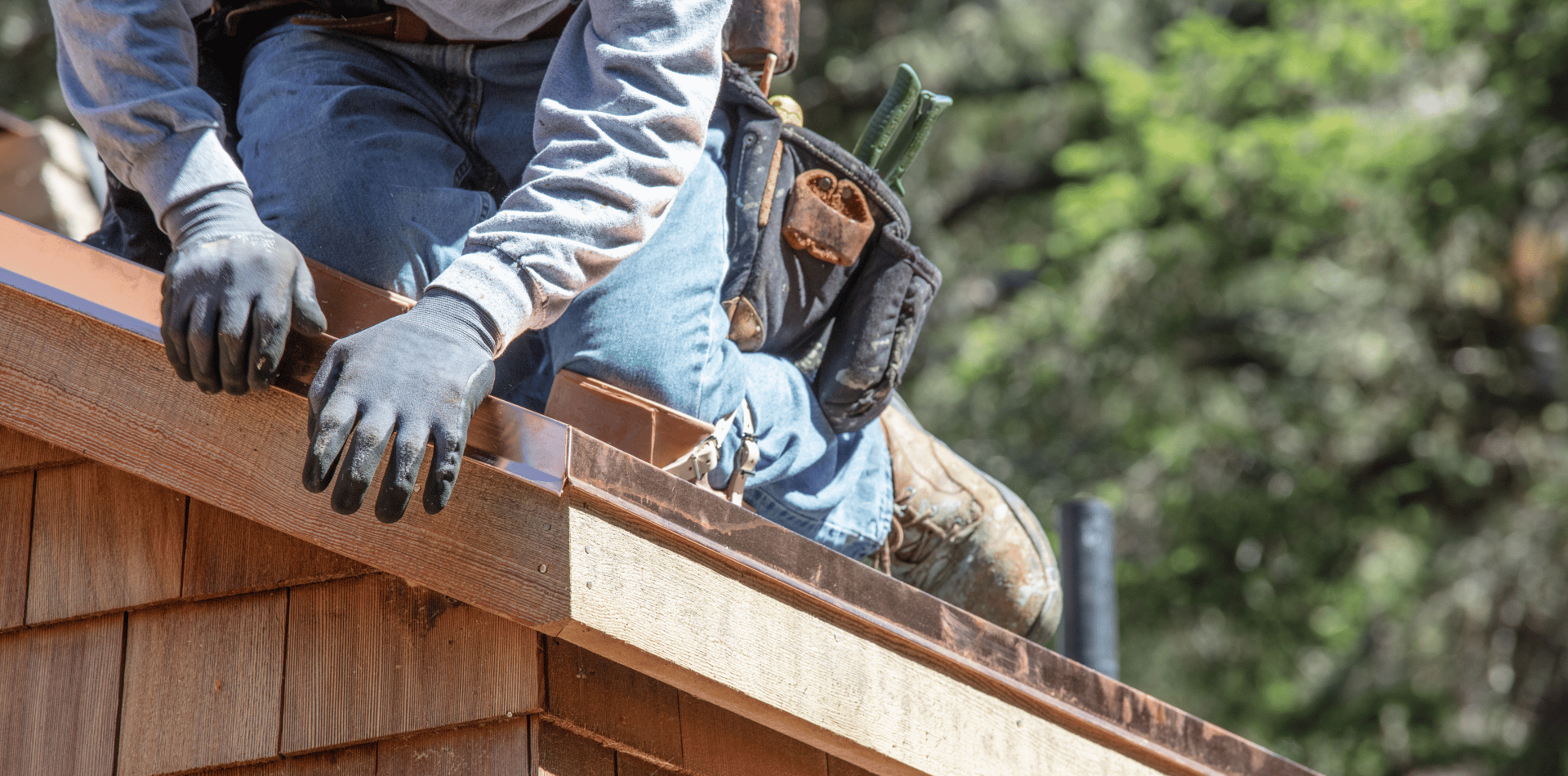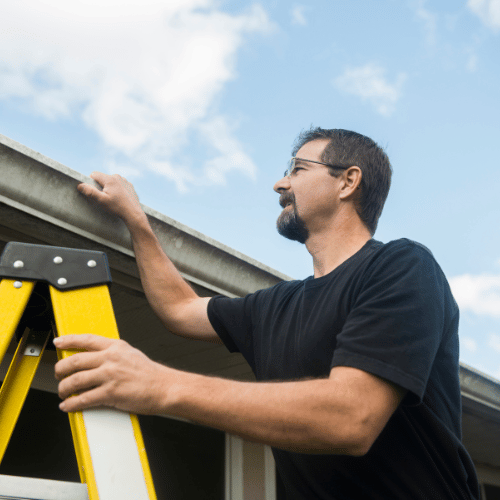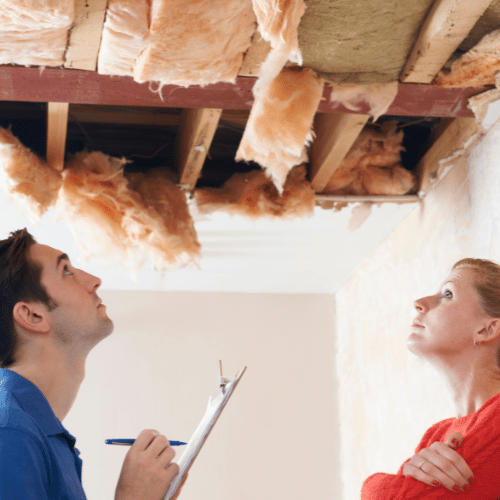Roof Flashing
What is Roof Flashing?
Roof flashing is a crucial component of a roofing system that helps to prevent water from seeping into vulnerable areas of the roof where different materials meet or intersect. It is designed to create a water-resistant barrier and direct water away from critical joints, seams, and intersections, ultimately protecting the underlying structure from potential water damage.
The primary purpose of roof flashing is to seal gaps and openings in the roof where water could penetrate and cause leaks. It is commonly made from metal, such as aluminum, copper, or galvanized steel, due to its durability and resistance to corrosion.

Get a FREE quote
Contact Us
Flashing is typically installed in the following areas:
- Valley Flashing: Placed in the valleys where two roof planes meet, valley flashing prevents water from running down the joint and directs it into the gutters.
- Chimney Flashing: Installed around the base of chimneys, chimney flashing creates a watertight seal between the chimney and the roof, preventing water from entering the home.
- Vent Pipe Flashing: Used around plumbing vent pipes and other ventilation systems, vent pipe flashing ensures that water cannot seep into the roof around these protrusions.
- Step Flashing: Used along the sides of walls and chimneys, step flashing provides protection at the joints between the roofing material and vertical surfaces.
- Drip Edge Flashing: Installed at the edges of the roof, the drip edge directs water away from the fascia and into the gutters, preventing water from dripping down the sides of the building.
- Skylight Flashing: Surrounding skylights with flashing ensures a watertight seal and prevents water from leaking around the skylight frame.
The correct installation of roof flashing is crucial for maintaining the integrity of the roofing system and preventing water damage. Improperly installed or damaged flashing can lead to leaks, which may result in costly repairs and structural issues over time. It is essential to use high-quality flashing materials and seek professional assistance to ensure that the flashing is correctly installed and functioning effectively.
How does flashing protect my roof from leaking?
Flashing plays a vital role in protecting your roof from leaking by creating a water-resistant barrier at vulnerable areas where different roofing materials intersect or where roof features, such as chimneys and vents, penetrate the roof's surface.
When installed correctly, flashing serves the following purposes to prevent water from infiltrating your roof:
- Diverts Water: Flashing is strategically placed to redirect water away from potential leak points. For example, valley flashing installed in roof valleys guides rainwater to flow down the centre of the valley and into the gutters, preventing it from seeping under the roofing materials.
- Creates a Seal: Roof flashing is designed to form a tight seal at critical junctures, such as where a roof meets a wall or where a chimney protrudes through the roof. This seal prevents water from entering through gaps or joints in the roofing system.
- Channels Water: Flashing channels water away from sensitive areas. Drip edge flashing, installed at the edges of the roof, directs rainwater into the gutters instead of letting it run down the fascia or siding, protecting the building's structure.
- Provides Redundancy: Flashing adds an extra layer of protection to vulnerable roof areas. Even if the primary roofing materials were to fail or wear out over time, the flashing can still act as a barrier against water intrusion.
- Resists Corrosion: Flashing materials, especially metals like copper, aluminium, and galvanised steel, are chosen for their resistance to corrosion. This ensures that the flashing maintains its effectiveness and durability over the years.
- Accounts for Roof Movement: Roofs naturally expand and contract with temperature fluctuations. Properly installed flashing allows for this movement, accommodating the changes in the roof's structure without compromising the water-tight seal.
- Protects Roof Penetrations: Flashing around roof penetrations, such as vent pipes and skylights, prevents water from entering through these openings. The flashing creates a weatherproof barrier, ensuring that rainwater does not leak into the interior spaces below.
Overall, the role of flashing is to prevent water from infiltrating the critical areas of your roofing system, where leaks are most likely to occur.
Regular inspection and maintenance of flashing are essential to ensure its effectiveness and prolong the life of your roof, protecting your home from potential water damage and costly repairs.
Concerned about a leaky roof?
Don't let a leaking roof spoil your day. Hire a professional to handle all your roofing needs.
You'll save money & gain peace of mind.
How do I know if my roof flashing needs to be replaced?
Determining if your roof flashing needs to be replaced involves inspecting for several key signs of damage or wear.
Here are some indicators that your roof flashing may need replacement:
- Visible Damage: Look for any visible signs of damage such as cracks, rust, corrosion, dents, or holes in the flashing. Metal flashing can corrode over time, especially in harsh weather conditions or if it's made from a less durable material.
- Leaks: If you notice water stains on ceilings or walls, especially after rain, it could be a sign that the flashing is failing and allowing water to penetrate the roof.
- Loose or Separated Flashing: Flashing that has come loose or separated from the roof or wall surfaces is no longer effectively preventing water intrusion. This can happen due to poor installation, strong winds, or the natural expansion and contraction of building materials.
- Signs of Improper Installation: If the flashing appears to be improperly installed (e.g., misaligned, incorrect overlap, gaps), it may need to be replaced to ensure proper function.
- Age: Consider the age of your flashing. If it's nearing or beyond the typical lifespan for its material (15-30 years for most types), it may be time to replace it even if no significant damage is visible.
- Mold or Rot: Check for signs of mould, rot, or decay around the areas where flashing is installed. These can indicate ongoing water leaks that have compromised the flashing's effectiveness.
- Building Renovations: If you've had major renovations that affect the roofline, chimney, or other areas where flashing is installed, it's a good idea to check and potentially replace the flashing to ensure it's still functioning correctly.
- Deterioration of Seals: Examine the caulk or sealant around the flashing. Over time, these can dry out, crack, or deteriorate, compromising the watertight seal.
If you suspect your roof flashing may need to be replaced, it's wise to consult a professional roofing contractor like Kaptol Roofing Newcastle. We can perform a thorough inspection and provide expert advice on whether replacement is necessary and what materials would be best suited for your specific roofing situation.
Regular maintenance and timely repairs can prevent more extensive and expensive damage to your home.
Is it necessary to replace flashing when getting a new roof?
When getting a new roof, it is generally recommended to replace the flashing as well.
There are several reasons for this:
Compatibility with New Roof:
New roofing materials may require different flashing types or installation techniques to ensure a proper seal and effective water diversion. Using old flashing might not be compatible with the new roof's design or material.
Wear and Tear:
Flashing, like roofing materials, undergoes wear and tear. If your roof needs replacing, it's likely that the flashing is also at or near the end of its useful life, especially if it was installed at the same time as the old roof.
Ensuring a Watertight Seal:
The main purpose of flashing is to prevent water infiltration at the roof's most vulnerable points. Installing new flashing ensures that these critical areas are properly protected, reducing the risk of leaks and water damage.
Cost-Effectiveness:
Replacing the flashing during a roof replacement can be more cost-effective in the long run. It eliminates the need for additional labor costs that would be incurred if the flashing needs to be replaced separately at a later date.
Warranty and Longevity:
Many roofing warranties require that all components of the roof, including the flashing, be installed new to ensure the warranty's validity. Also, having new flashing installed with a new roof ensures that both have a similar lifespan, reducing the likelihood of needing roof repairs due to failing flashing.
However, in some cases, if the existing flashing is in excellent condition, made of a durable material like copper, and is deemed compatible with the new roof, a roofing contractor may suggest that it doesn't need to be replaced. This decision should be made by a professional roofer who can assess the condition and suitability of the existing flashing.
It's important to discuss this with your roofing contractor during the planning stage of your roof replacement. They can provide the best advice based on the condition of your current flashing, the type of new roofing materials being used, and the specific requirements of your roof's design.







